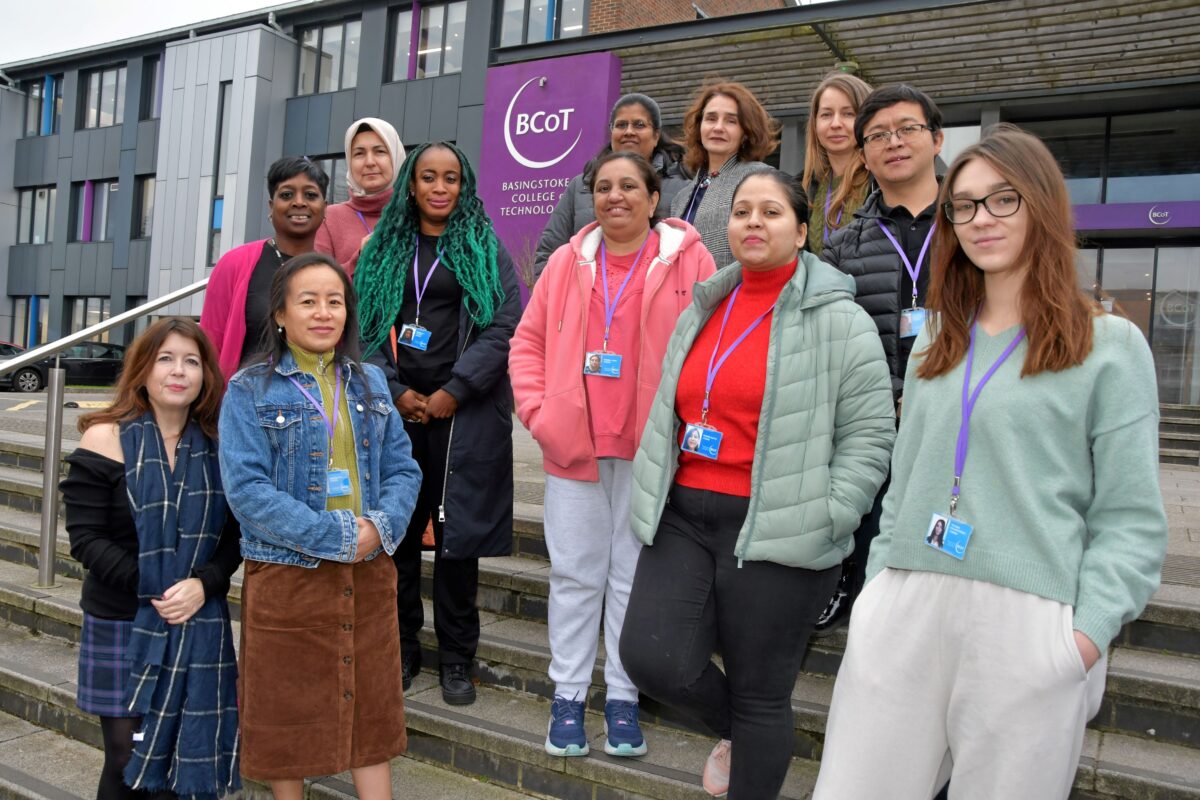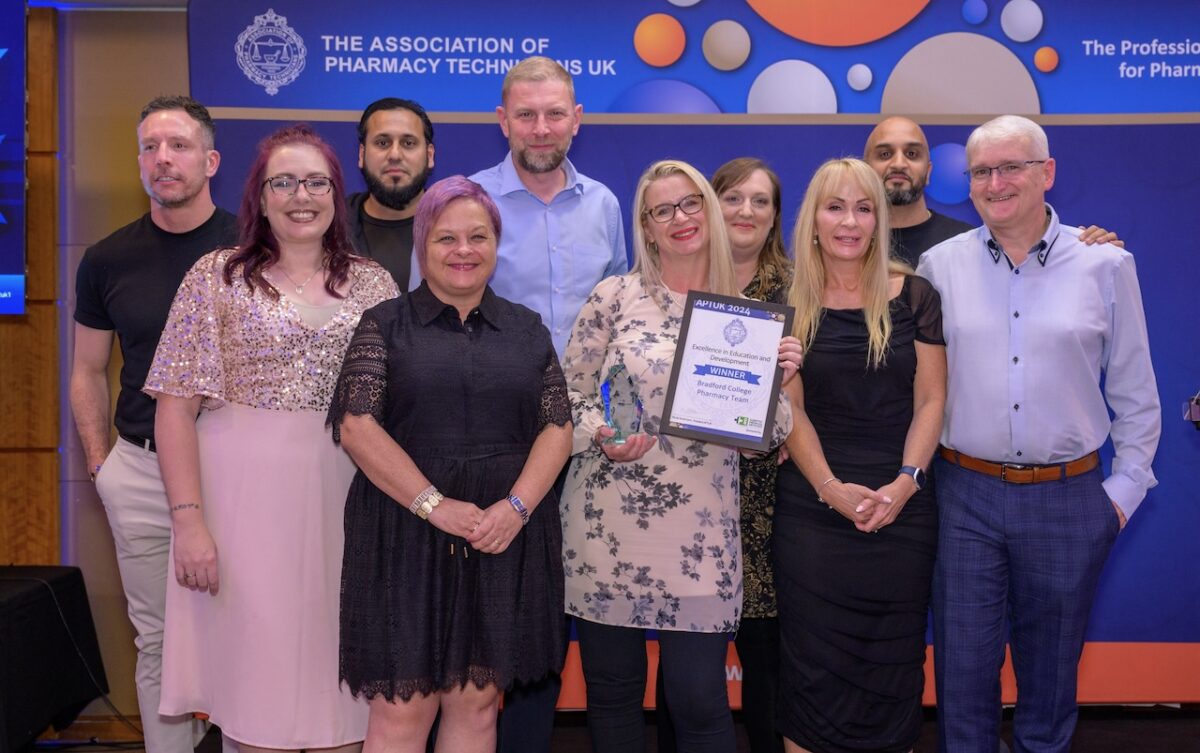Funding available to ensure high quality industry placements for T Levels
Purpose
This note sets out the principles we expect providers to use when developing their plans for implementing a high quality industry placement offer. It also provides good practice that providers may want to adopt to establish or enhance their industry placement provision.
The department is keen that this funding makes an impact as early as possible and to ensure that students undertaking industry placements in academic year 2018 to 2019 are offered a high quality experience that maximises their chances of stepping into skilled employment following their education.
Industry placement principles
This note builds on the high level principles being tested in the Industry Placement Pilot that ran throughout academic year 2017 to 2018 with The Challenge. The 8 principles outlined below were developed in consultation with over 150 employers and providers as part of the pilot design.
These are ‘emerging’ principles that will continue to be refined through consulting more widely with the sector and employers, and therefore it is possible that these will change before T Levels are rolled out.
However, for 2018 to 2019 and 2019 to 2020 CDF, these principles provide the minimum requirements for industry placement delivery and we expect providers to adopt them.
Timing and duration
1) Our expectation is that industry placements are on average 50 working days in length within an acceptable range of 45 to 60 days (plus) covering a minimum of 315 hours. (The normal full time working pattern of the employer, which would typically consist of 7 to 7.5 hours a day). This applies to 2018 to 2019 delivery only after which it will be reviewed. It is important to note that the minimum length of 45 days is non-negotiable. The exact duration for the T Level industry placement from 2020 is to be determined and this hourly total is subject to change.
2) Industry placements should be organised in line with the normal requirements of the industry, which may, in some circumstances, be outside normal provider working hours or outside the academic timetable. The requirement for the provider to maintain appropriate review/supervision remains. Examples of this might include the hospitality and catering industry and some agricultural activity.
3) Providers must ensure that student GCSE Maths/English exam preparation (where this applies) is not compromised.
Occupation specific
4) The industry placement must be occupationally specific and focused on developing the practical and technical skills required for the profession or trade that the student is studying for.
5) It will be expected that students will already have a number of occupationally relevant skills to apply and practice in the workplace. The provider must agree a structured work plan with the employer for the duration of the placement and meet with the student and employer at regular intervals.
Student readiness
6) The student must be considered work-ready (have an appropriate work ethic and etiquette) to undertake an industry placement, to manage both student and employer expectations of the appropriate behaviours in the workplace.
Externality
7) The industry placement must take place with an external employer (such as, it is on a site external to the student’s learning environment and not on another site operated by the provider). It is critical that the student experiences a real life job role and work life pressures (including travel to work, independence from their peers, working with new people and dealing with the public). This requirement applies even where the institution has extensive facilities mirroring the workplace.
Special educational needs or disabilities (SEND) provision
8) Students with SEND must be able to access high quality external industry placements so they can benefit from that real life experience as much as their non-SEND peers. Providers should consider what preparation and support students with SEND would need in order to access industry placements, and complete them successfully. Providers should use available industry placement capacity and delivery funding, alongside other available funding where appropriate (for example, High Needs or Disadvantage Funding) to provide additional support in the workplace and assist with reasonable workplace adjustments. This could include the services of an independent workplace mentor or, where students have more complex needs, a job coach.
Clear and pre-determined outcomes
The principles above outline the key differences between ‘work experience’ commonly offered as part of 16 to 19 study programmes and more substantial ‘industry placements’ that will form an integral part of T Levels, namely, the strong emphasis on pre-defined and sector specific learning aims. The industry placement should provide the real life learning environment to develop and hone the technical skills and behaviours required for the relevant industry. We have specified a longer duration to ensure that students are given sufficient time to master essential skills and develop their strengths; and the employer has the opportunity to develop the students’ technical abilities so they can add value to the business. The time in the workplace must have a clear structure and learning objectives to ensure students get the best from their industry placement; thereby enabling them to secure skilled employment in their field as a result.
For reference please see the assessment forms (PDF, 278KB, 6 pages) that can be used to complete assessments of student work readiness prior to the placement, and then subsequently their progress at mid-point and post placement, developed for pilot.
Timing and duration – illustrative examples
We have provided illustrative examples (PDF, 326KB, 3 pages) that were developed for the pilots for planning the allocated time into the curriculum, using the day release and block placement industry placement options. These examples have been tested through the pilots. It is anticipated that employers from different industries will have their own preferences as to when to host industry placements during the academic year. We ask that providers offer a degree of flexibility when negotiating the timing and pattern of the placement with employers.
Building internal capacity
We recommend that providers take a whole organisation approach to planning the introduction of substantial industry placements and ensure that this is fully integrated into the core business. In the process of completing the implementation plan, we asked providers to forward plan for the next 2 to 3 years and consider staffing and other capacity issues. By September 2018, we would expect to see progress against these plans. In particular, evidence of the recruitment of dedicated staff to begin sourcing placements; re-training of existing staff; and student work preparation/employability training and time out on placements integrated into the curriculum for delivery from the autumn term.
Collaboration with employers
The department does not underestimate the scale of the challenge to create high quality industry placement opportunities for all technical students in future, in particular, the importance of securing willing employers to host substantial industry placements. When completing implementation plans, providers were asked to set out their overarching employer engagement strategy, including the requirement to identify appropriate employers within the local area and invest time to build networks and relationships, so that providers can successfully deliver high quality industry placements at scale.
Collaboration with other providers
We recognise providers’ experience of delivering work placements of this nature varies considerably. Smaller and/or less experienced providers may encounter various challenges when building their industry placement offer from scratch. We would expect that leading providers who are actively delivering work placements will share their local knowledge and expertise (including good practice and materials/tools).
We also recommend that smaller providers collaborate with other neighbouring or similar providers for economies of scale, by being open to pooling resources, for example, hiring a cross-site work placement coordinator and/or sharing the operational responsibilities. It is important that neighbouring providers work together and in partnership with Local Enterprise Partnerships, Chambers of Commerce and/or other local employer representatives, to develop a coordinated local employer engagement strategy.
We have provided illustrative examples (PDF, 326KB, 3 pages) of use of funds and options for collaboration to achieve this common goal.
We hope that all eligible providers take full advantage of this opportunity and use this advice to aid the delivery of high quality work placement programmes from 2018 to 2019.
Data collection for CDF Industry Placements
New guidance on how to record CDF industry placements (MS Word Document, 57.1KB) on the ILR and School Census is now available. Please read this in conjunction with the latest versions of the ILR provider support manual and school census guidance for 2018 to 2019.
Industry Placement Pilot 2017 to 2018
A pilot scheme (run by the Challenge) ran throughout the academic year 2017 to 2018 to trial the delivery of effective industry placements. The pilot worked with 21 post-16 providers and hundreds of employers to identify best practice for delivering high quality industry placements.
The Challenge have published a set of useful resources to support providers in delivering industry placements, these are now available on the AOC website. A second set of resources will be available from July 2018.
We would encourage providers to make maximum use of these resources.
Further guidance on the delivery of industry placements
The additional guidance below is based on lessons learnt and best practice from the industry placement pilot that ran in 2017 to 2018 academic year and the questions that have been raised since the original publication of this guidance in September 2017.
Delivering high quality industry placements
As a provider it is your responsibility to ensure that your students get the best possible industry placement. The DfE will be taking a close interest in how placements are organised and delivered in 2018 to 2019 to ensure they are in line with the high quality industry placement principles. Please ensure you keep evidence to demonstrate the following:-
- that the institution has taken a whole organisation approach to planning and implementing industry placements so that it is fully integrated into the core business, and that staffing levels reflect this
- that agreed learning objectives have been set for each student on a placement
- that an accurate and sufficient record is kept of the student’s progress against the agreed learning objectives
- that sufficient pre-placement preparation for the student has been put in place to ensure the student is ready to go on the placement
- that each student on a placement has completed a placement log
- the frequency and content of monitoring visits
- that placement breakdowns have been handled effectively, that the provider has dealt with any issues with either the student or employer adequately and that alternative placements for the student have been organised where appropriate
- if students have completed the placement then: student satisfaction feedback and employer review of their performance
- employer satisfaction feedback
Bursary top up
You will have received an increase in your discretionary bursary funding for 2018 to 2019 to support industry placements. Please remember that this fund can be used to help all vocational students undertaking CDF industry placements to access their placements, and is not restricted to those students who would normally be entitled to receive the bursary.
Financial Support for Employers
It is important that employers are supported to deliver industry placements and DfE would like to remind you that your CDF allocation can be used to meet employer costs where these are considered necessary. This can include:-
- supplementing employer costs to supervise the student on placement
- to ‘buy or hire’ more tangible items required for the job, (for example uniforms, protective work gear and equipment), or
- to cover additional insurance costs and the costs of applying for a DBS check (where this is necessary)
The only stipulation is that it supports the intention to build local capacity to increase the provision of high quality industry placements and represents good value for money. As with all government funding allocated to providers, payments are subject to audit. Please keep a running total of this type of expenditure and copies of purchase or employer receipts where applicable.
Mandatory placements that attract mainstream funding do not count towards industry placements hours
The overall aim of CDF is to build new capacity to deliver industry placements and not to double fund existing provision. Where hours are currently spent on work experience, that is an existing and compulsory requirement for a qualification and already part of a study programme, these cannot be counted towards the industry placement hours delivered through CDF. This is because providers are already being government funded for these through mainstream funding. An example of this is childcare qualifications. If you wish to include a CDF industry placement on top of the existing requirements then you would need to arrange the required industry placement hours (minimum of 315) on top of the existing work experience hours that are recorded as planned ‘qualification hours’ on the ILR and school census.
Withdrawing students from placements
We would expect that students spend the whole of their industry placement with one employer. However, we recognise that there will be some instances where, the placement is not meeting its objectives or the student feels at risk. Whilst on placement, you as a provider have overall responsibility for the welfare of the students. If you have a situation where a placement is considered unsuitable and a student needs to be removed from a particular workplace setting, we would expect alternative arrangements to be made with another employer to ensure the student doesn’t miss out on this valuable experience. In such circumstances the 45 days can be split across the two employers and the student will not be required to repeat learning objectives covered with the first employer. We will be asking you to keep a local record of placement breakdowns and the reasons for this (which should also include a record of the split days), so we can monitor the commonly cited issues around placement breakdown. We will also be asking for information relating to the reasons why placements have broken down in future monitoring forms.
Industry placements not within the local area
It is possible for a student to undertake their industry placement with an employer anywhere in the UK. If the workplace is too far from the student’s home for a reasonable daily commute and/or the student is willing to stay away from home during the week, then appropriate accommodation must be found close to the workplace. Both the provider and employer have a shared duty of care for the student in these circumstances. With respect to health and safety at work, the duty of care rests primarily with the employer. However, providers should be in regular contact with the learner and with the employer to ensure the learners’ safety and wellbeing throughout the industry placement. This should include a minimum of three review points conducted in person over the course of the placement.
Industry Placements in other countries
Although, we would expect it to be the norm for placements to be delivered within the UK, we are looking at the long-term feasibility and implications of sending students abroad for their industry placements. Currently, overseas placements can only occur for a portion of the student’s placement, if for example, the employer’s main training centre is based in another country and it is standard practice to send employees for this particular training. In this scenario, it is critical that you discuss the logistics with the employer, ensure that appropriate monitoring, review and safeguarding processes are in place and ensure you have formal agreement from the student and their parents/guardians. In these circumstances, we would expect providers to adhere to the same monitoring rules, applied for all other students, as outlined in the paragraph above.
Occupational mapping against T Levels
The DfE are currently undertaking a mapping exercise to ensure that in future only placements for occupational areas that relate to T Levels are supported using the Industry placement Capacity & Delivery Fund. The framework for the reformed technical education system is provided by 15 occupational maps, which detail the skilled occupations that are in scope within each of the technical education routes. The standards for these occupations will form the basis of content for T Levels. Therefore, to give an early indication of which occupational areas will be in scope for T Levels. Providers are advised to prioritise occupational areas that are included on the occupational maps.
Industry placements not restricted to the first T Levels
It is important to note that industry placements delivered in 2018 to 2019 are not restricted to the first 3 T Level pathways and in fact can relate to any of the 25 T Level routes (see the Occupational Maps for reference) that will be introduced. CDF funding is to support providers to prepare for the successful delivery of high quality industry placements across all relevant subject areas and industries when all T Levels have been rolled out.
Recommended focus on second year level 3 students
Although, there are no restrictions to which students providers place on an industry placement, best practice and evidence from the pilot shows that it is more beneficial for the student to undertake their placement in the second year of their study programme. This is because the student will have had a significant period of time in the first year to build up the skills and knowledge required to make the most of the placement, adding value because they are able to get more involved in tasks, take on greater responsibility and therefore have a better opportunity to develop these skills and have a meaningful placement. Therefore, we advise that these placements take place in year 2.
Also, now T Levels are confirmed as level 3 programmes we are also increasing the emphasis on level 3 students. Therefore for delivery in 2019 to 2020 academic year we are introducing a requirement to prioritise level 3 placements (see the CDF factsheet). The combination of sending year 2 and level 3 students on placement will be more beneficial to providers, as it will increase the likelihood that employers will be satisfied with the experience of offering students placements, and therefore more willing to continue to offer placements again.
We are aware that for some courses this may be more difficult, so where this is the case then it would be acceptable for students to start their placement towards the end of the first year of their study programme as long as they have undertaken sufficient work experience and/or preparation as part of their programme, to ensure they are ready for the placement.
Minimum of 3 review points – start, middle and end of placement
Providers should visit the student on placement at the start (such as, within the first month of starting), middle and end of the placement, at a minimum. The purpose of these site visits is to:
1) Check the appropriateness of and progress towards the student’s technical learning objectives that were agreed up front and ensure the student is continually being stretched, not performing menial tasks that do not support their technical skills development. Objectives should be updated to make them more stretching if necessary.
2) Check the students’ wellbeing and satisfy themselves that student is not being overworked, the hours are manageable, they are happy within the workplace, have developed relationships with employees and they are content with the pace of their training. This is especially important when the student is on a block placement, when they will have limited contact with the provider for the duration of their placement.
3) Discuss any issues with the employer regarding the placement, student’s behaviour or work ethic. The employer will want assurances that they’ve got some provider support where necessary and a point of contact within the provider – this helps build and sustain relationships.
Providers are expected to confirm that the placement has been completed to satisfaction, so providers will need to collect evidence during the placement to base this judgement on and should complement the evidence collected in the student’s log book. This can be achieved most effectively through a 3-way face-to-face conversation between the employer, provider and student and supplemented with telephone calls or contact via email with the employer and informal contact with the student in the interim.
The frequency of these supplementary conversations should be at the providers’ discretion. We’d expect providers to prioritise students that need additional support or where the employer or student has raised concerns. It will also depend on the timing models providers have adopted – for day release, meetings of this nature will be less frequent as we’d expect that checking in with students whilst they’re back in college/school, could be more convenient.
Accounting for sickness in attendance record
In the case where students are off sick during their industry placement for 1 to 5 days over the duration of the placement, this can be absorbed into the placement hours. Where the student’s sickness exceeds 5 days or the student is off long-term, we would expect that providers to make arrangements with the relevant employer to extend the placement as far as possible, to allow the student make up this time and complete their placement to satisfaction, alongside their studies.
Employer reference
On completion of the industry placement, the employer does not assess students’ progress formally, however the employer will be expected to confirm that the student attended the whole time and give an appraisal of the progress the student made against their learning objectives. This should be discussed at the final review meeting with the provider, so that the provider can make the judgement as to whether the placement is completed satisfactorily. We would encourage employers to complete a student reference. Further resources to support providers with this will be published shortly.
Student satisfaction survey
We would encourage students to complete a satisfaction survey that accounts for their end-to-end experience (including work preparation, matching to employers and their time in at the workplace) and whether this met their expectations and they would recommend undertaking an industry placement to their peers. The details could be fed back to the employer with the agreement of the student. It is important that students, providers and employers can learn from the student’s experience and this evidence can be used by providers to help improve their provision.
Further resources to support providers with this will be published shortly.
Safeguarding Learners from Abuse/Bullying and inappropriate behaviour in the workplace
In arranging industry placements, we would not ordinarily expect providers to DBS check the employer or their employees, since this is unnecessarily onerous in terms of employers willing to offer industry placement and for institutions to administer this. However, we would expect to see evidence of the following:
a) That students have been prepared for the workplace in terms of specific advice on how to deal with any instances of bullying/abuse or behaviour which they consider to be inappropriate. This would be expected to include briefing/training for the young people to identify what would constitute any of these and how to deal with this in the workplace and raise concerns immediately with their education provider contact for them to intervene.
b) The monitoring visits to students should include a distinct component to discuss and confirm the safeguarding well-being of the student, particularly from abusive or inappropriate behaviour, which they may have encountered in the workplace.
c) That industry placements that are for periods of longer than one month especially in more isolated scenarios, because of geography or very low numbers of employees (or sole employers), are risk assessed and that more regular contact with the student is carried out, including by phone, specifically on the point of safeguarding their well-being and welfare.
Where a student has a need for personal or health care due to a disability, the person providing that personal or health care may be required to obtain an enhanced DBS check and such a check should be undertaken if the activity constitutes regulated activity relating to children.
At their discretion, the provider may also choose to ask a line manager or supervisor to undergo a basic DBS check if they feel this is necessary, in situations such as where the student may be vulnerable or where the placement has a residential component. This is not a legal requirement but can be requested at the discretion of the provider.
Travel time
When recording the planned hours for industry placements using the new learning aim, providers should include the time spent in the workplace, normally this would not include the travel time to and from the workplace. We understand that in some rural locations, the commute time to employer premises can be excessive and/or may be restricted by local transport. Therefore, if travel time exceeds 1 hour each way then the additional time may be included in the planned hours. This means the additional time can be taken into account in calculating the hours for inclusion when recording the industry placements on the Individualised Learner Record (ILR) and the school census.
Where providers are struggling to broker suitable local transport arrangements and this is impacting heavily on industry placement provision, we encourage you to get in touch with us through the ESFA enquiry form.
Lunch breaks
The lunch hour can be included in the working hours so long as it does not exceed 1 hour.
Payment of students
Industry placements are about providing students with high quality, meaningful training, not work. Therefore, students on an industry placement should not be entitled to a salary as the placement is forming part of a course of secondary education. There is no legal requirement or expectation that students will be paid. We recognise that for some employers, any type of unpaid placement would discourage them from taking part in the programme, so they are able to pay students should they wish to. In taking this approach, our aim is to ensure as many students and businesses as possible benefit from industry placements and to prevent students facing any avoidable costs.
HSE advice
Health and Safety Executive (HSE) guidance on work experience covers provider and employer responsibilities and is relevant to Industry Placements. Providers are encouraged to familiarise themselves with the HSE guidelines.
ESFA enquiries
Contact form https://form.education…
For all enquiries for the Education and Skills Funding Agency
-
guide to key responsibilities and delivery of work placements(PDF, 300KB, 4 pages)
- we have provided illustrative examples (PDF, 326KB, 3 pages) for the use of funds and options for collaboration, based on the delivery of 10% of qualifying students
-
timing and duration models(PDF, 225KB, 1 page)
-
assessment forms(PDF, 278KB, 6 pages)
- TNC useful resources/tools
Published 28 September 2017
Last updated 26 September 2018 + show all updates
- A revised guidance on the timing of placements, new guidance on recording industry placements on the ILR and school census and new policy updates under the further guidance on the delivery of industry placements.
- This document has been updated to include lessons learnt and best practice from the industry placement pilot.
- First published.












Responses